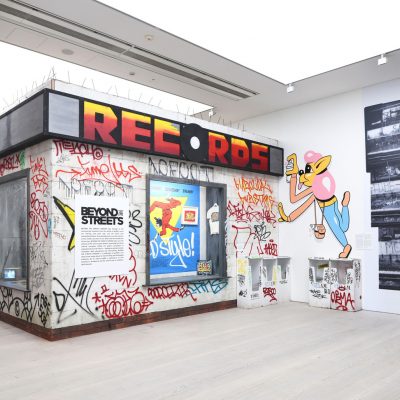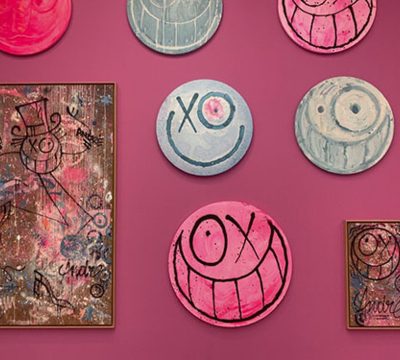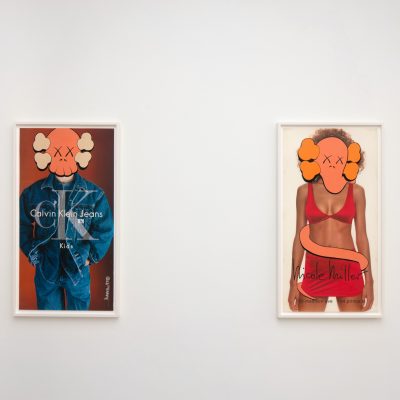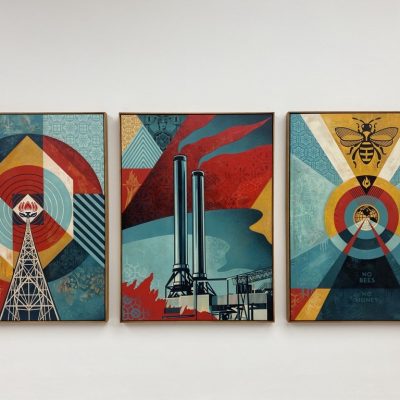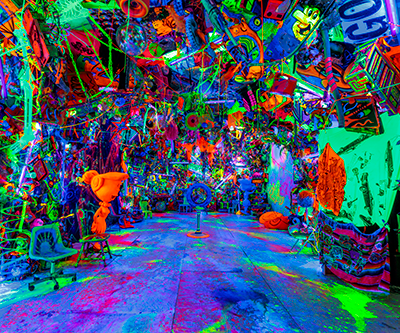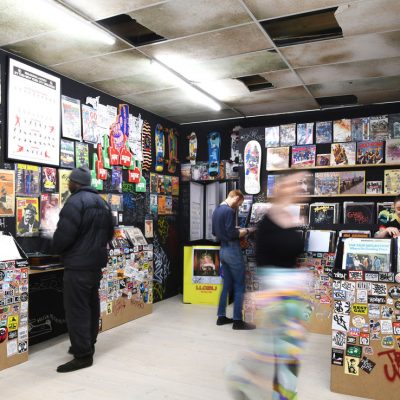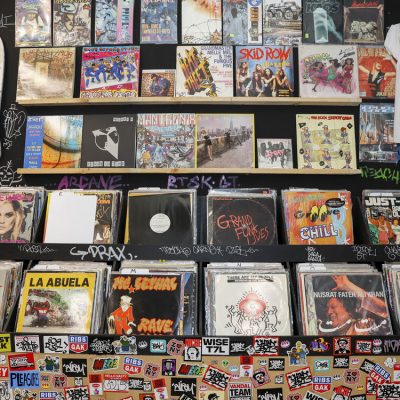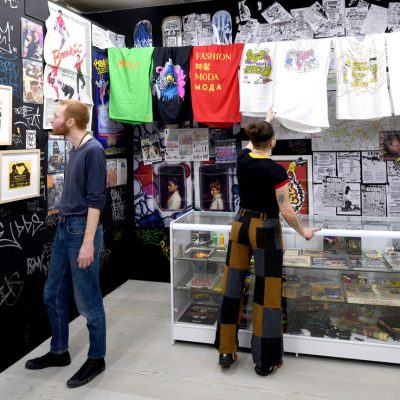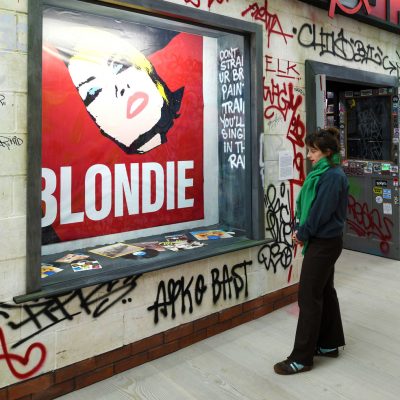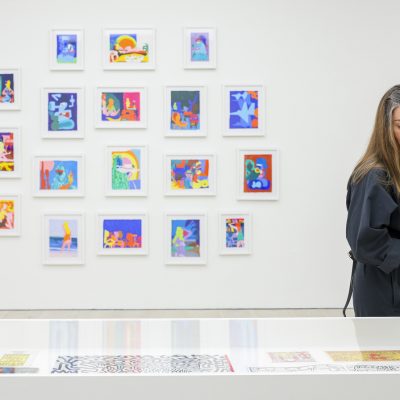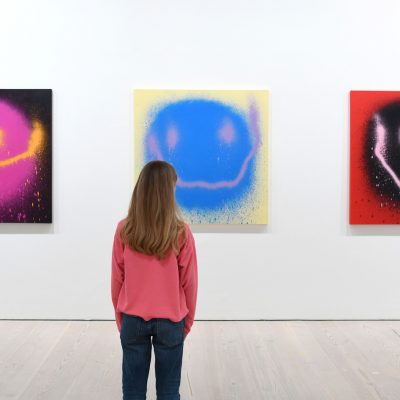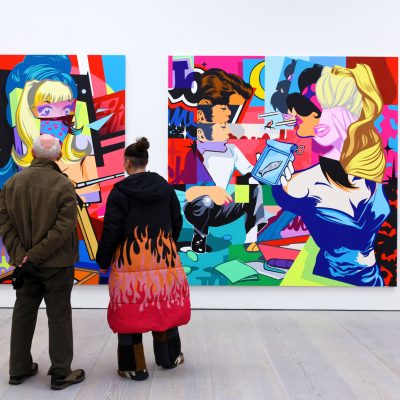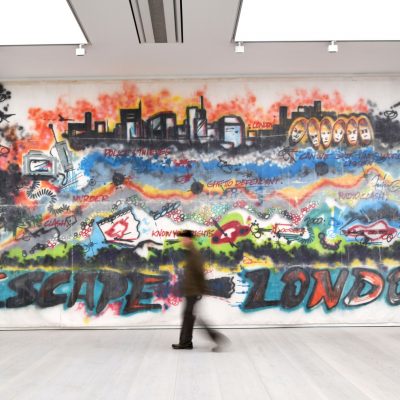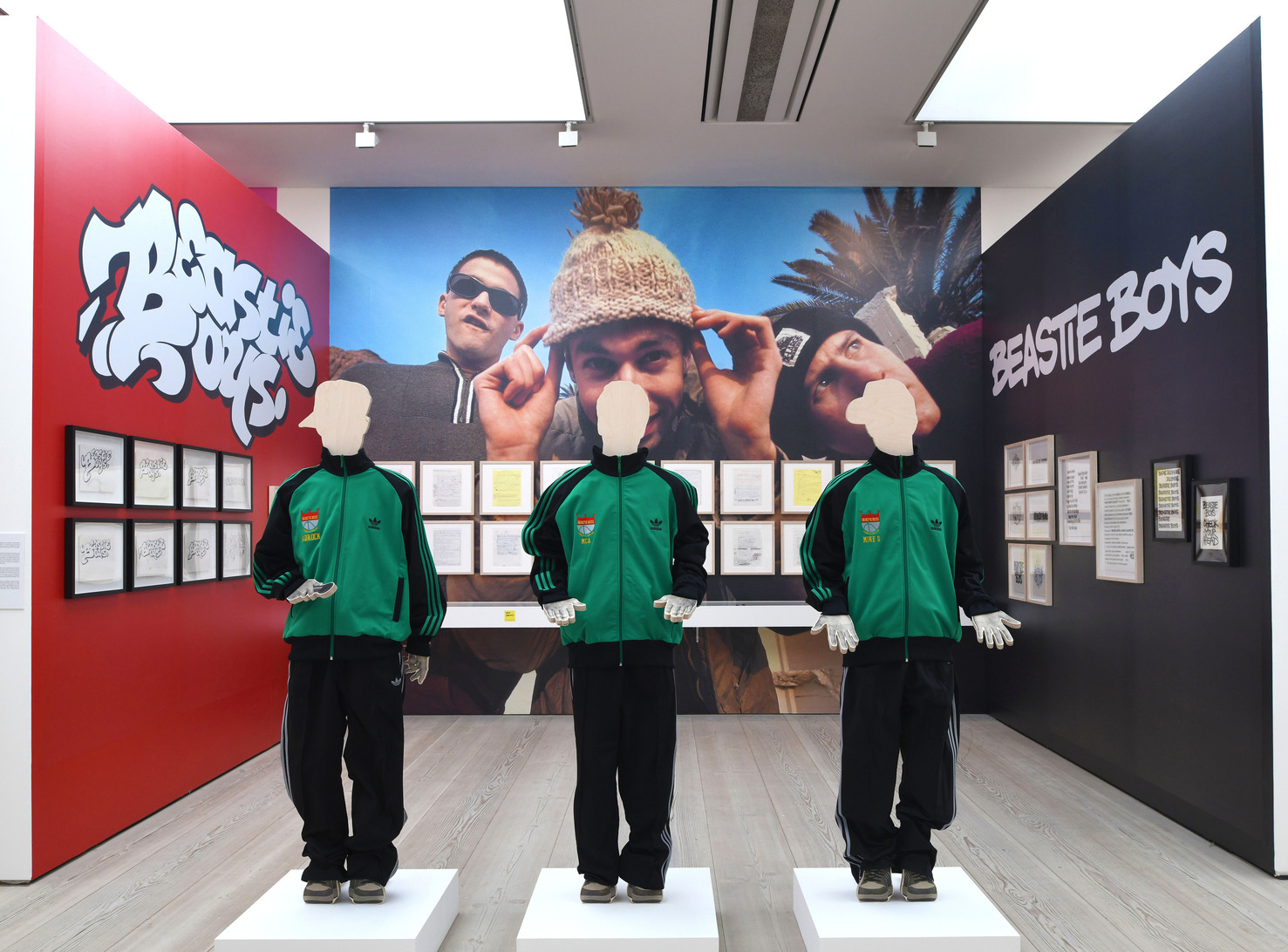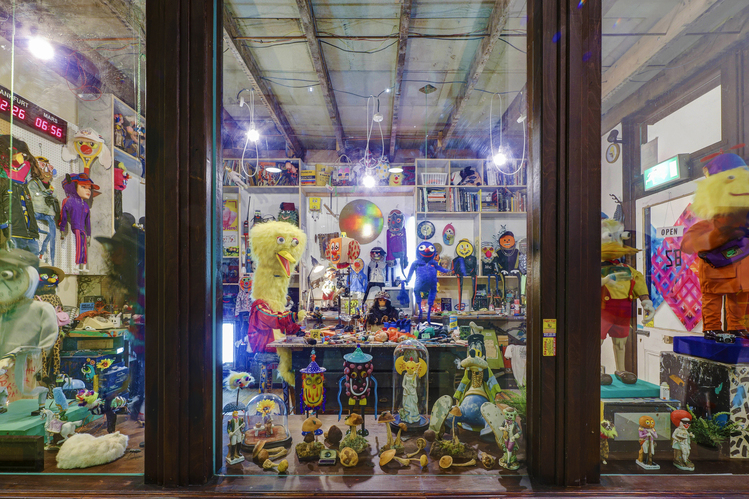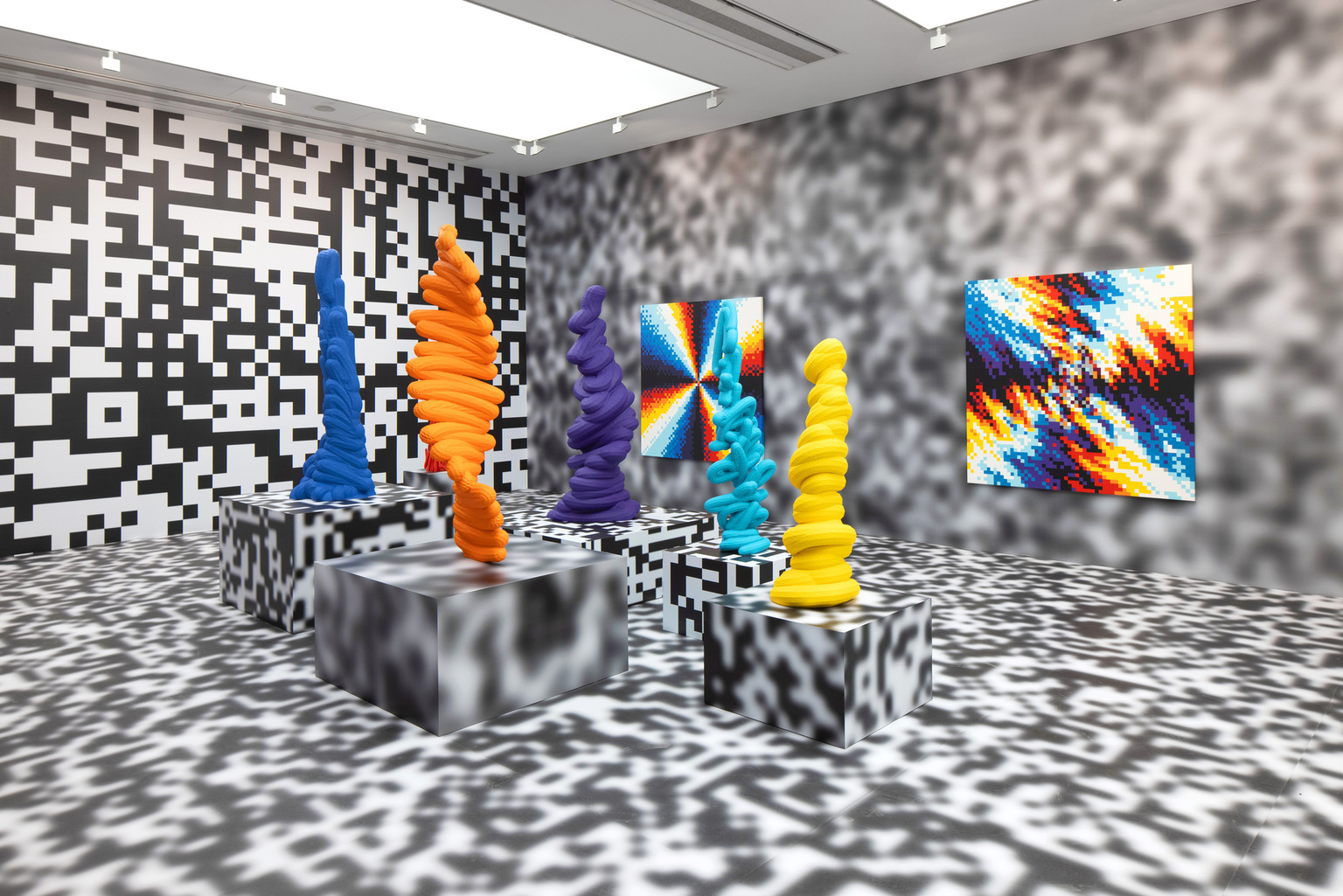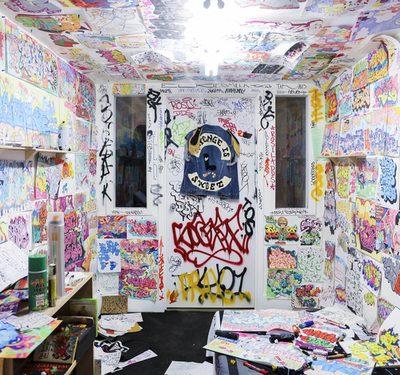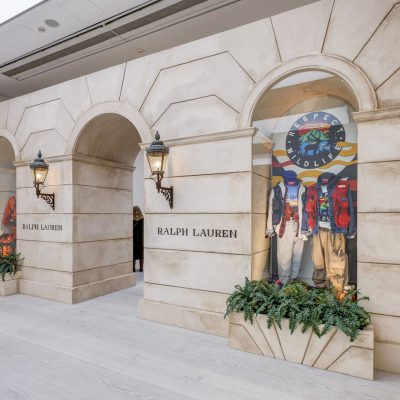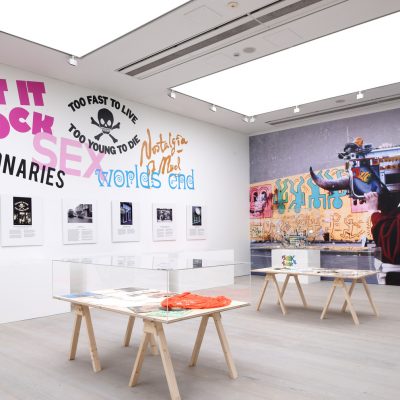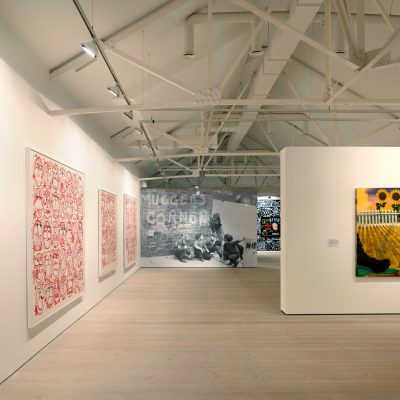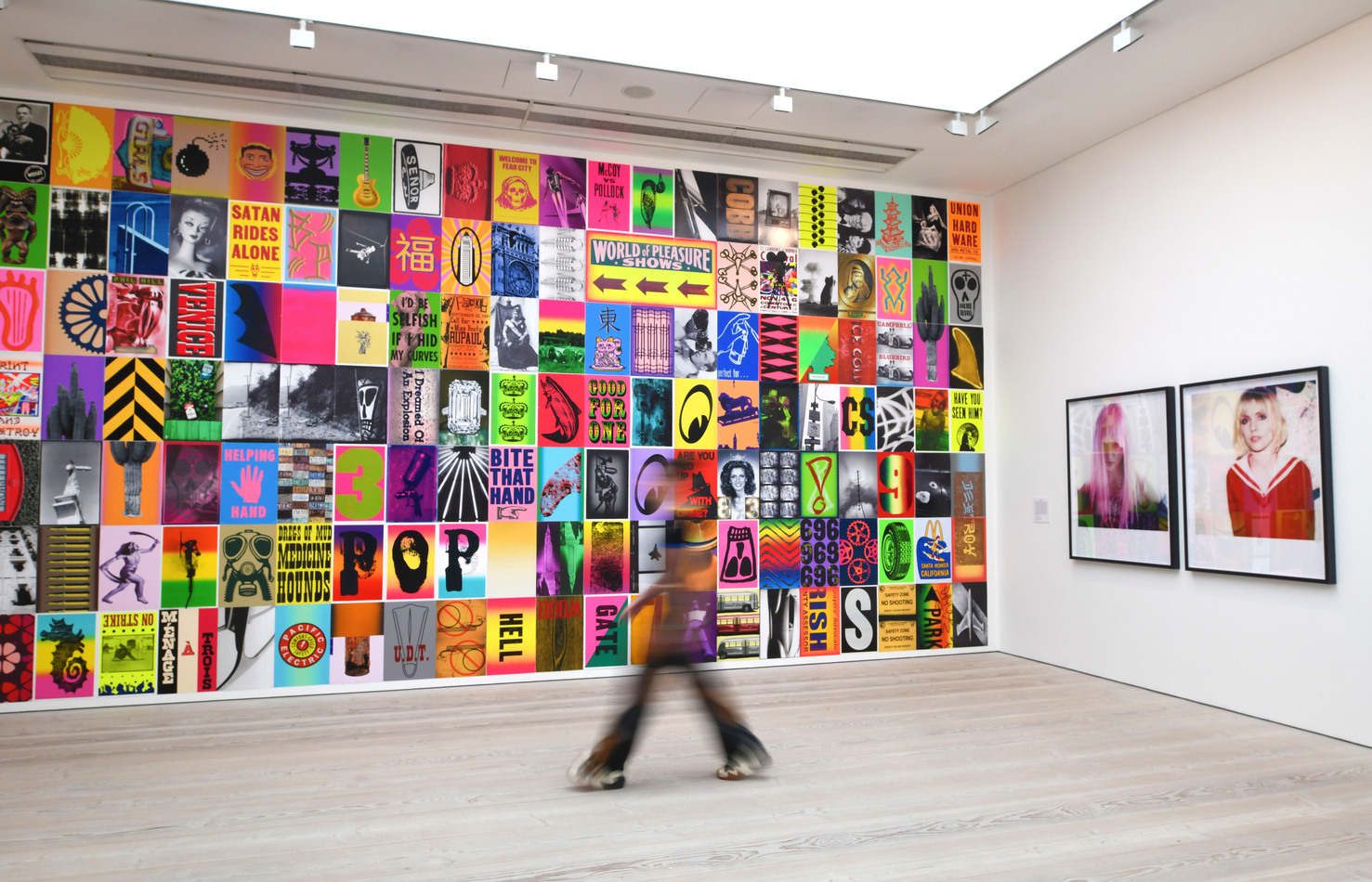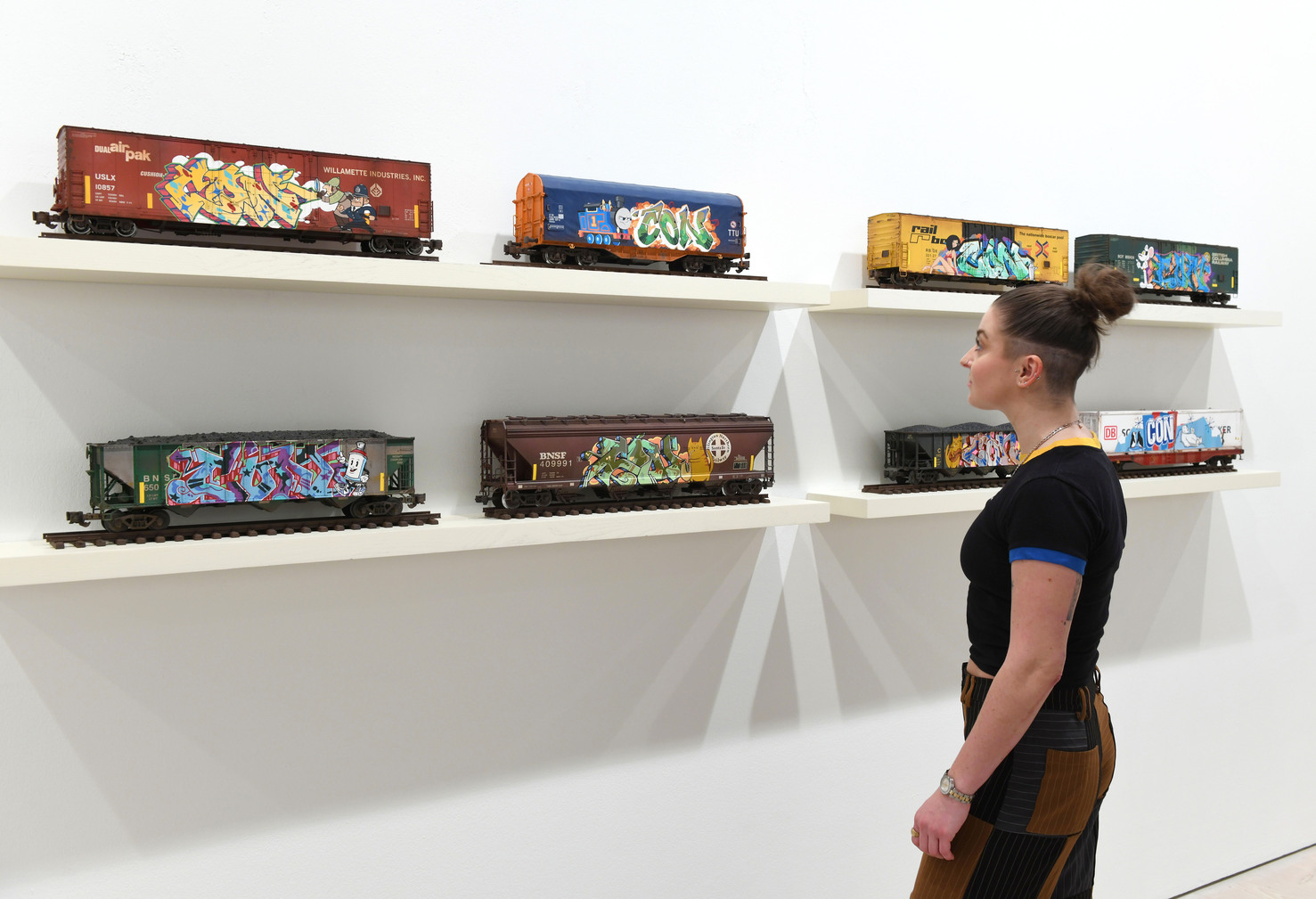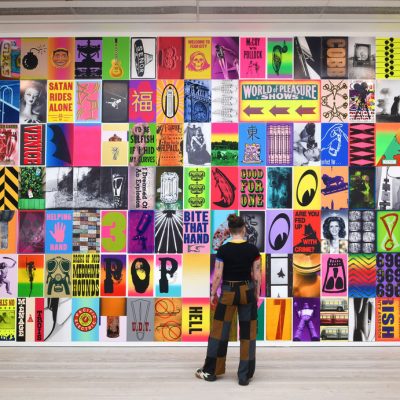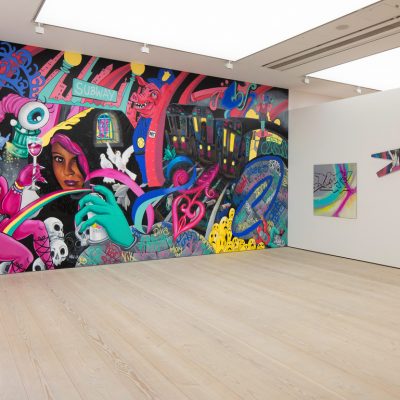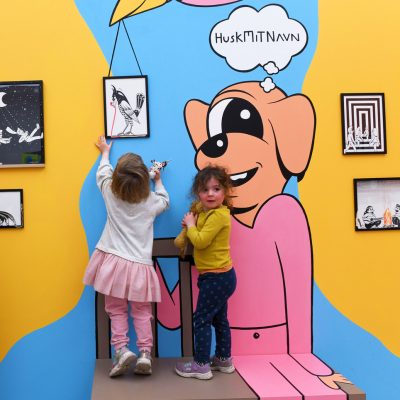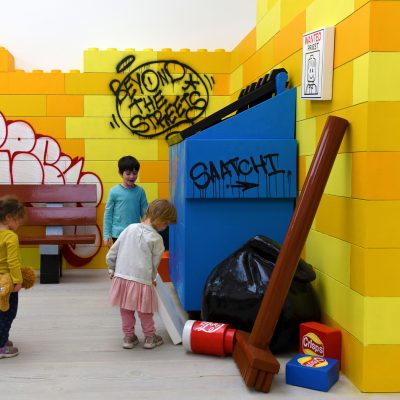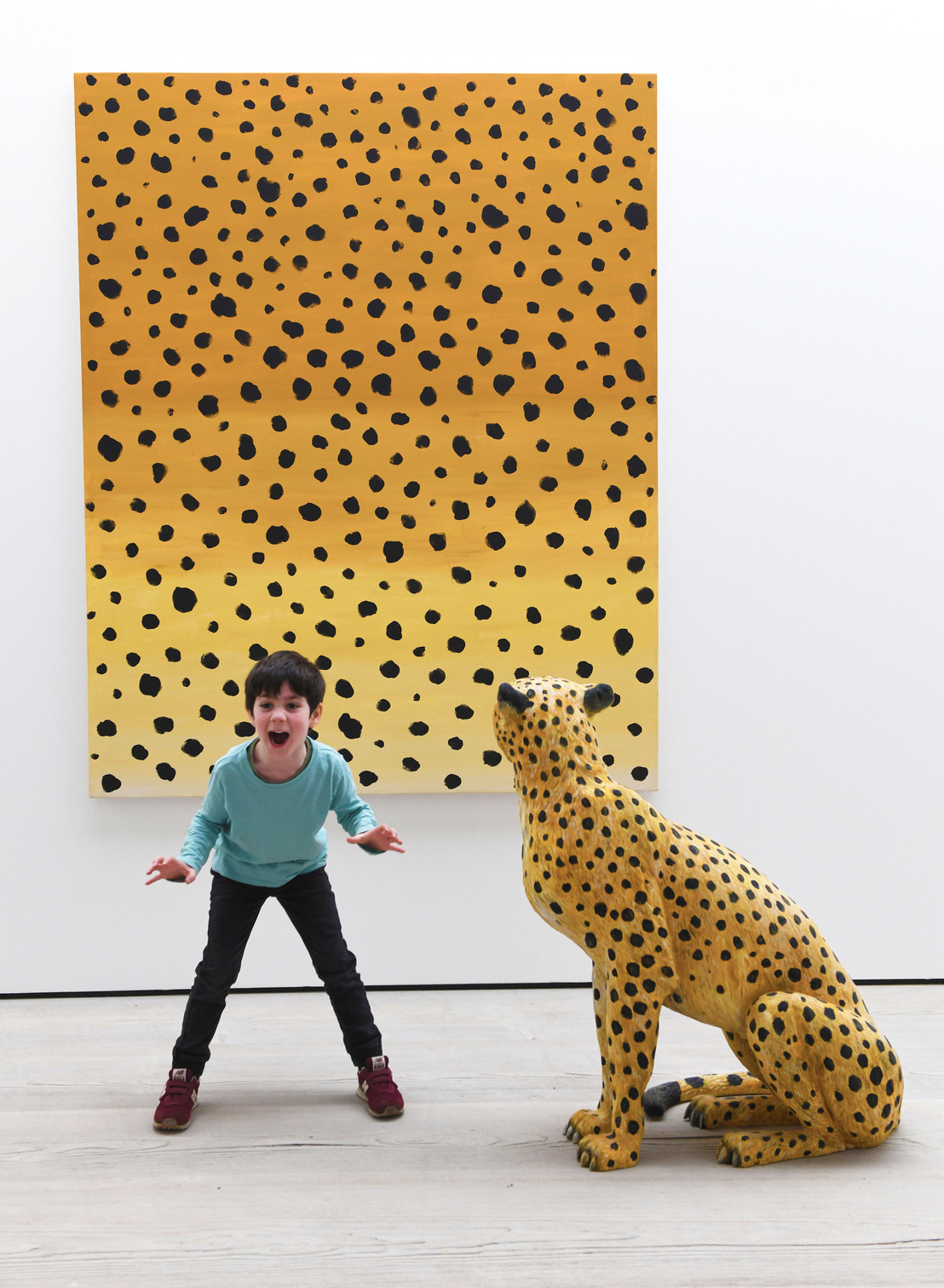
Beyond the Streets London
Saatchi Gallery
17 February – 9 May 2023
Unveiled in February, Beyond the Streets London, supported by Adidas Originals, presents a resplendent display of over 100 international artists’ creations, ranging from audacious train writers to esteemed large-scale muralists. This unparalleled exhibition, which encompasses all three floors of the renowned Saatchi Gallery in London, is the most comprehensive assemblage of graffiti and street art ever exhibited in the UK.
Following successful exhibitions in Los Angeles and New York, Beyond the Streets London features fresh pieces, grand installations, treasured ephemera, and remarkable fashion that encapsulate the potent impact of graffiti and street art worldwide. Curated by esteemed graffiti historian Roger Gastman, this exhibition delves into the intrinsic human desire for public self-expression, accentuating artists who have emerged from the graffiti and street art milieu and evolved into disciplined studio practitioners, as well as pivotal cultural figures inspired by this vibrant art scene.
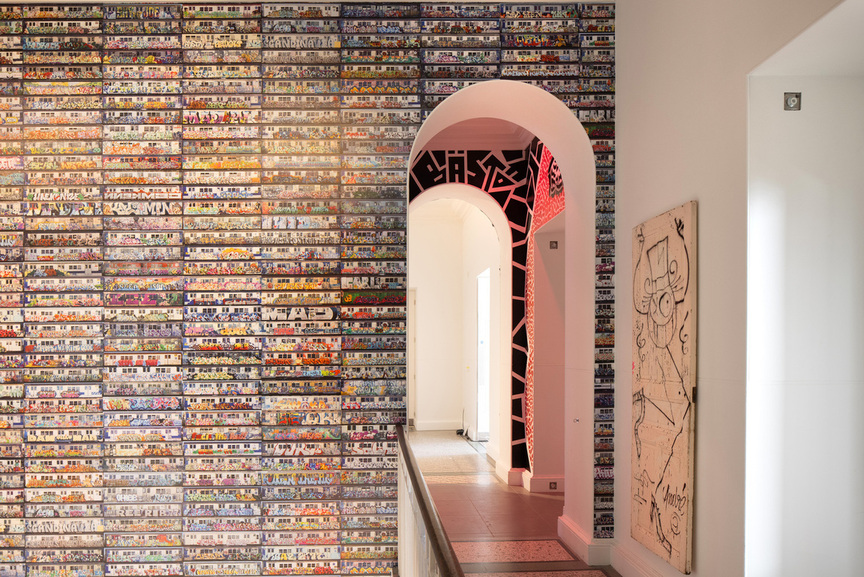
Installation shot. Image courtesy of Saatchi Gallery© BEYOND THE STREETS LONDON, Saatchi Gallery, London 2023
The exhibition has been divided into ten chapters. Each chapter explores exceptional moments in the history of this artistic movement, including the emergence of punk, the genesis of hip-hop, and the undeniable influence of street culture on fashion and film.
In the first chapter, Music & Art Converge, visitors will explore the socio-political unrest of the late 70s and 80s that led to artistic resistance in the US and UK. This period saw youth culture expressing their identity through graffiti as a response to oppression and a bleak economic outlook. The chapter connects London and New York through works by FUTURA2000, Malcolm McLaren, MODE2, and Martha Cooper, and features an interactive installation of a recreated record shop, Trash Records.
Dream Galleries is the second chapter, highlighting American and European pioneers, photo documentarians, and cultural icons who played a pivotal role in establishing and propagating graffiti culture globally. André Saraiva’s Dream series visually showcases the development and fusion of graffiti, street art, hip-hop, punk, fashion, and break-dancing from the late 1970s to the present. Featured artists include Mister CARTOON, known for his tattoos and LA murals; a unique Beastie Boys installation displaying fashion and ephemera; and LADY PINK’s feminist murals, illustrations, and paintings.
The Legends chapter showcases iconic artists like NYC’s Eric HAZE, José Parlá‘s new large-scale painting, advertisement posters by KAWS, and unique ephemera by 1980s street artist Keith Haring.
The Blockbusters, which is the fourth chapter, features works specifically commissioned for the exhibition by graffiti pioneers Shepard Fairey and FAILE.
The Larger Than Life chapter features a large-scale installation by Kenny Scharf, showcasing the immersive Cosmic Cavern with Day-Glo paintings and reused materials. It also includes Paul Insect’s signature puppet characters made from recycled materials, highlighting London’s street art pioneers.
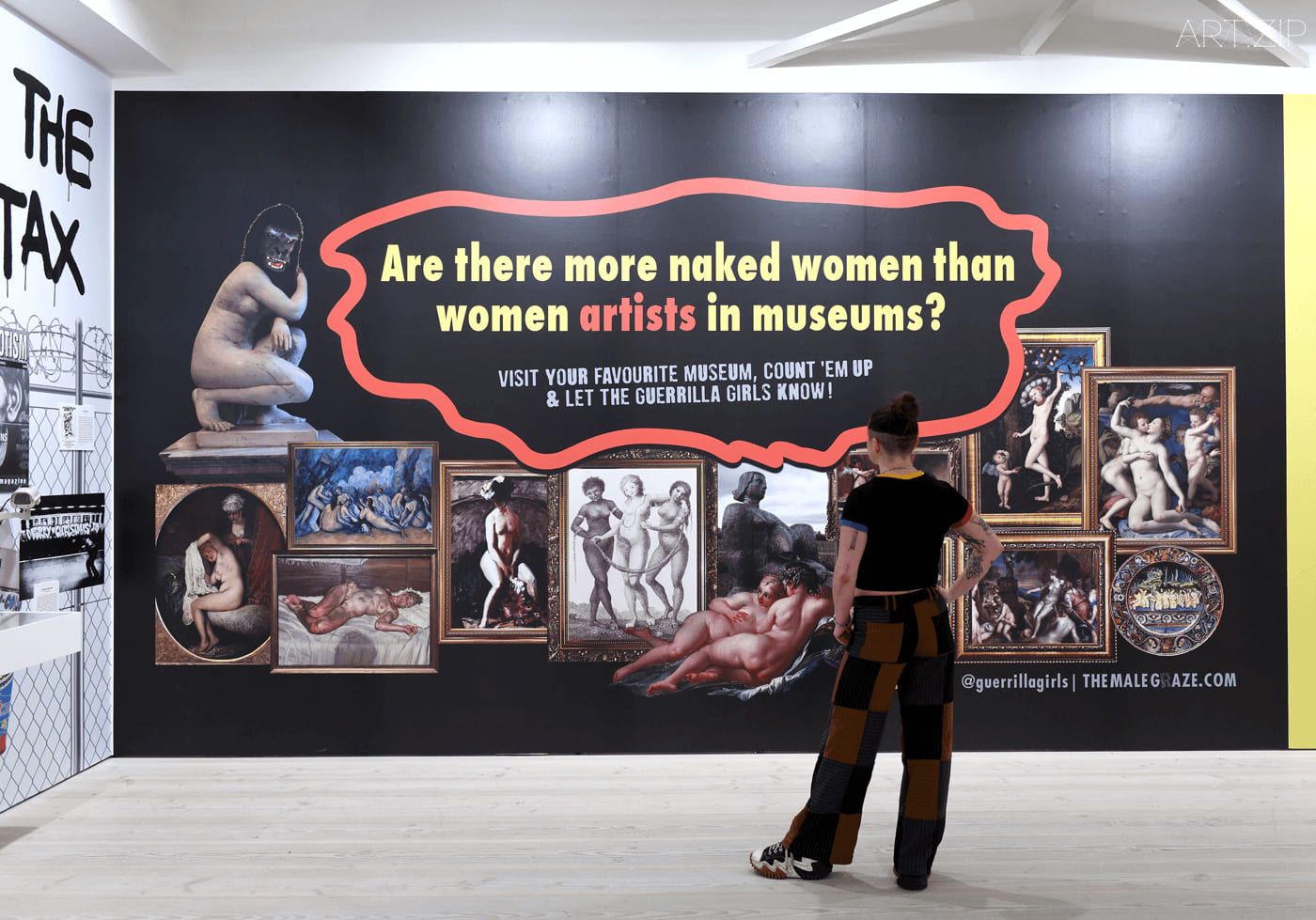
Installation shot, works by Guerrilla girls. Image courtesy of Saatchi Gallery © BEYOND THE STREETS LONDON, Saatchi Gallery, London 2023
Timeline delves into street culture history, exploring the intersections of music, fashion, and film, and features a large wall vinyl by feminist collective Guerrilla Girls, acknowledging the male-dominated nature of street and contemporary art.
The closing chapters consist of Social Commentary: Graffiti as a message, Art with Conscience, and Consideration Into Innovation, featuring artists Fab 5 Freddy, VHILS and many more.
In the final chapter, The Next Phase, visitors will engage with new op-art works by Felipe Pantone, whose high-contrast, geometric patterns create a unique aesthetic of the digital age.
“With every exhibition we’ve put together I always learn something new and London is no exception. The amount of stories and historical moments–some of which may have been forgotten and arguably unknown until now–are what will make our Saatchi Gallery show such a spectacle. We really hope to educate and inspire through a curious lens that digs into the nooks and crannies of all these subcultures and the massive role London played in bringing them to light on a world stage.”
–Curator, Roger Gastman
Every corner of the Saatchi Gallery has been transformed, immersing visitors in artworks and ephemera displayed throughout hallways, tunnels, and staircases. Additionally, visitors will explore rooms that reveal the birth of graffiti in a way never seen before.
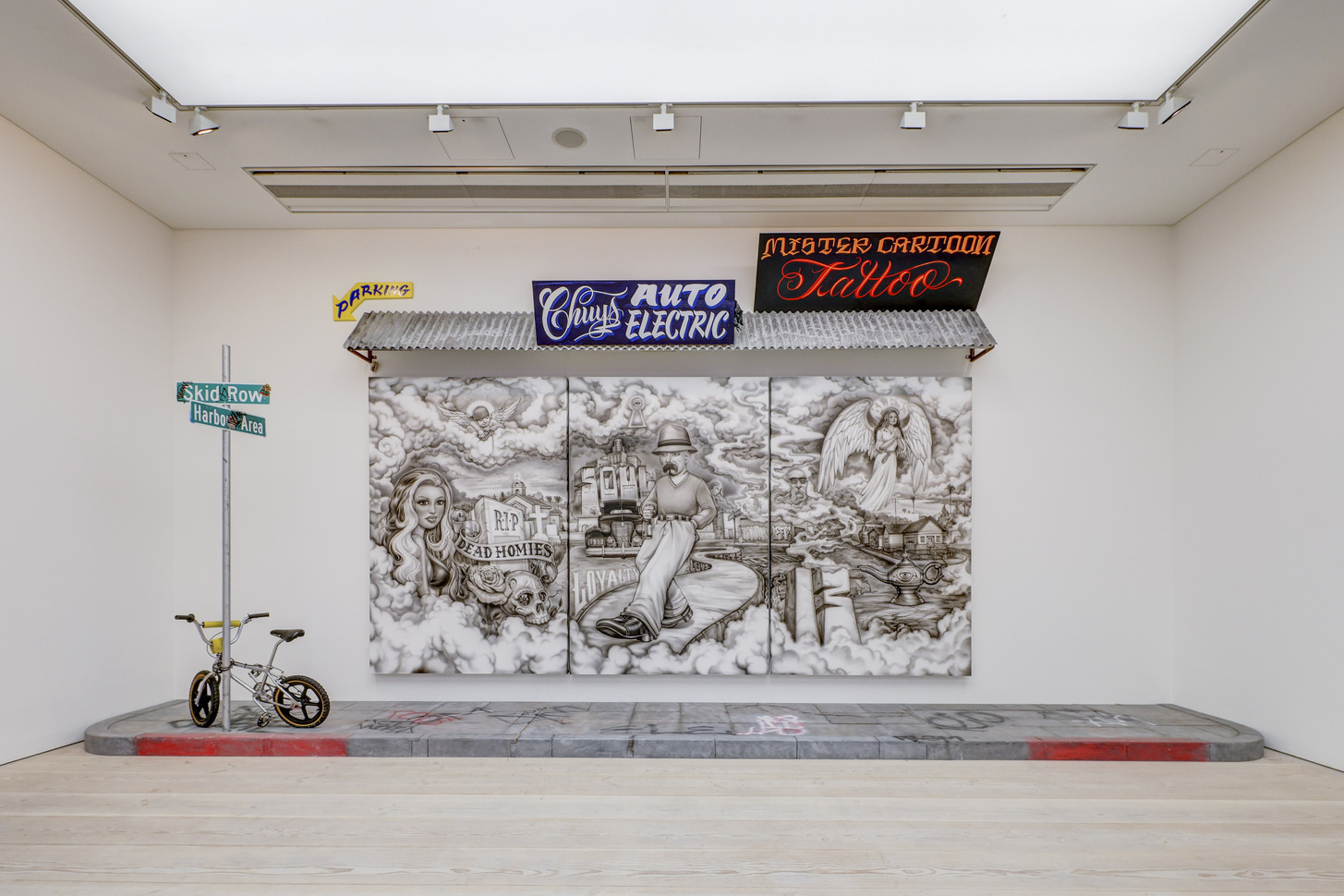
Installation shot. Image courtesy of Saatchi Gallery © BEYOND THE STREETS LONDON, Saatchi Gallery, London 2023
Interview with Evan Pricco—-Constant Conversation between Street and Gallery
Without a doubt, the scale and refinement of the exhibition’s works are awe-inspiring, and the diversity and brilliant colors are dazzling. After experiencing a “visual and auditory bombardment,” we were fortunate to interview the co-curator, Evan Pricco, also the editor-in-chief of Juxtapoz magazine. He led us to delve deeper into the details of this exhibition from his perspective.
AZ: What inspired the concept behind Beyond the Streets London, and how does it differ from previous exhibitions in LA and New York?
EP: I think London was the natural progression of where the show should go because London has played such a prominent role in the history of not only graffiti and street art but also music, fashion, documentaries, and films. All sorts of things have made London a natural extension from Los Angeles to New York. There had been such a great conversation between the artists from New York and London in the late 70s and early 80s. So it just made a really natural move from New York to London next, you know, where we were playing the shows up.
AZ: How does this exhibition stand out as the most comprehensive? What is its position in the historical narrative of street culture?
EP: This particular show is really trying to show how much the expression and the freedom of graffiti and street art inspired music, design, and fashion, how it wasn’t just about writing on walls. It was the spirit of it that would extend out into different kinds of creative endeavors. For this particular show, we really wanted to focus on the convergence of music and graffiti, through not only conversations about punk and hip hop but also rave flyers. All these kinds of genres came together and when they came together, it sparked something completely new and fresh. That’s kind of what we see here is these collisions and how they make all sorts of new art out of it.
AZ: Street culture has developed into so many forms, is there one word that can join all these forms together? What connects them all?
EP: I think it’s freedom. I think it’s the idea of not being told what to do and being able to write your name on a wall if someone tells you ‘you’re not allowed to’. I think it’s also just about the idea of expression being something that everybody has, and that if you approach art in a way that’s not necessarily art school, something really magical can happen. I think that a lot of these people have changed the way we look at art because they came from it in a way that is more untrained but also very professional, really beautiful and very expressive.
AZ: How did you select the artists?
EP: When dealing with something that is 50 years old, like the graffiti movement, the show expands and spans 50 years. You can’t include everybody, but what you want to do is to have great representations of all these different parts and all the different parts of the history. So we selected artists by kind of looking at some of the prominent names of the movement, prominent bands of the time or the era and into now, to look at who influenced them and how the baton is passed from generation to generation.
From past shows, we’ve had a lot of artists who were here again, and then we were allowed to bring new artists because graffiti keeps growing. It’s not just 1970 to 1990 and it ended. It keeps going so it’s all about who’s speaking to who and how all these artists are talking to each other through the generations.
AZ: Do you foresee or have had any controversial issues by including the more hardcore elements of graffiti?
EP: No, because that’s part of it. Every artist in this show did graffiti on the street and had to make a decision for themselves, like ‘how do I show my work in a gallery?’ Even for the more controversial artists who are in the show, perhaps they are going to think now, ‘I want to show work in a gallery’, ‘I want to learn how to do that’, or ‘I want to start showing my work in a different way’. So every artist in the show has had that moment in their life, ‘I want to do graffiti, but I want to show gallery work now’. So I think that part of the history is really important; everybody has that kind of question for themselves. So we haven’t had any problems with that at all. Actually, it’s been really refreshing and fun to work in that way because everybody is excited to be here. So even the controversial stuff is really exciting to show it to people in a new way.

Installation shot. Works by DDS. Image courtesy of Saatchi Gallery © BEYOND THE STREETS LONDON, Saatchi Gallery, London 2023
AZ: What narrative or message does Beyond the Streets London want to convey, particularly for those who are unfamiliar with street culture?
EP: That’s a great question. I think what we want to show to people and what we want people to take away from this show is that there is so much that came from graffiti and has expanded in so many different ways, and it’s still happening. We want to make sure that everyone walks away knowing that the stuff they see on the street is still growing. There are stories behind the work. It’s not just anonymous all the time, there are people behind it. So that’s one of the main things we really want to show to people: it’s still a growing thing and it’s still something that influences the way we look at the world.
AZ: We can feel it from the presentation. It is very vivid. There are so many interesting works in one room. What is the logic of curation to organize those 13 rooms?
EP: We broke it down into certain categories. This room in particular is all about a little bit more play in pop art and how that history of pop art played a role in the way graffiti artists were thinking about making their artwork. And there’s another room particularly about new innovations in how people use spray paint. There’s a certain room all about the move from street art to studio. So we kind of broke it down in ways. You don’t have to necessarily look at it that way, but we also have explanations for why we have it in certain ways. We really just wanted to move you through the history room by room.
AZ: What impact do you hope Beyond The Streets London will have in today’s art world?
EP: Well, I think this is actually a really good time to mention that we will be doing a Beyond the Streets Shanghai show later this year. So that’s one of the things that we hope that people get from this shows that there is more to come. More and more people are becoming artists and artists are becoming more and more famous like Shepard Fairey, Takashi Murakami and KAWS. They become bigger names. I think we just want to reiterate to people that there is a whole movement still happening and growing. There’s so many of these artists that you might have seen on the street that are making studio work. It’s unconventional and that is what is really special about it. So I hope that kind of impact is that the contemporary art world can be and be unconventional still.
AZ: How has Adidas been involved in this exhibition?
EP: It’s a natural connection because Adidas was basically the uniform for so many hip hop and graffiti artists in the 80s. It was quite easy because, you know, if you go to the top floor, you see all the kinds of Adidas clothing that has been worn throughout the years by famous people. It was the uniform. So that uniform, people started to identify themselves by, ‘if you wear an Adidas track jacket, you were part of the culture’. I think it’s just kind of a cool thing that just showed that Adidas has been with it since the beginning. It’s always been really natural. It’s the clothing everyone wore, and still wears.
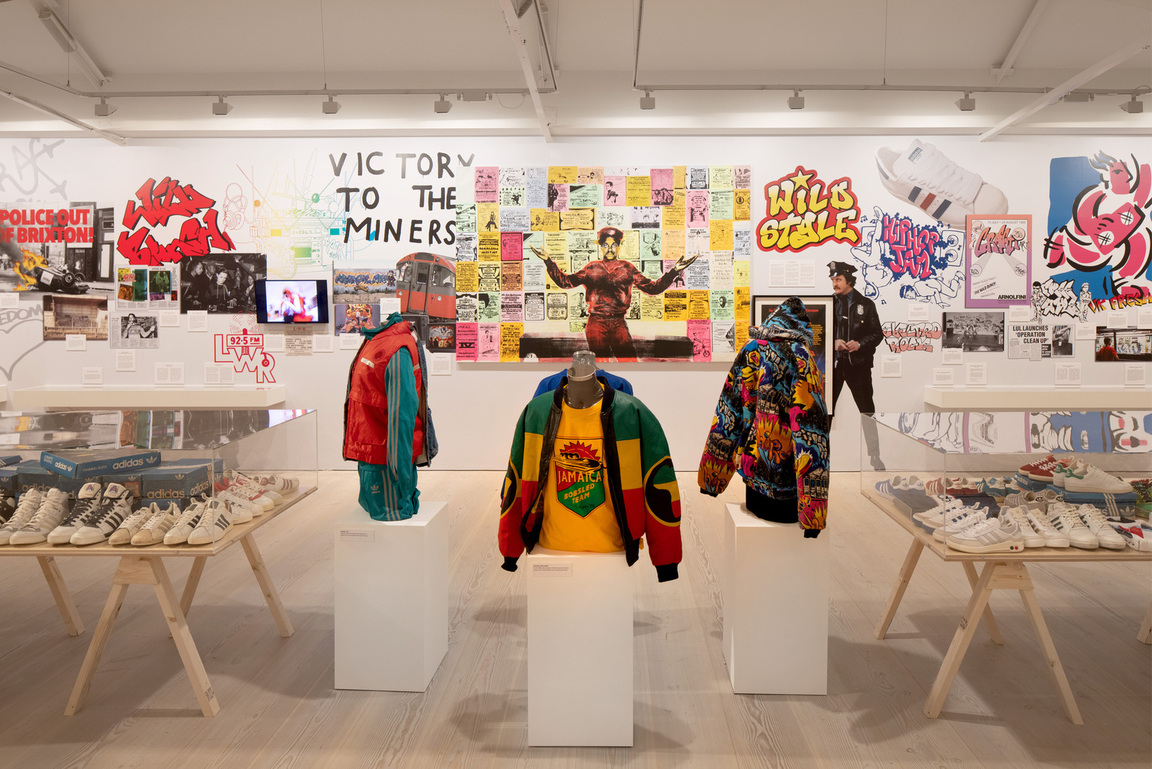
Installation shot. Image courtesy of Saatchi Gallery © BEYOND THE STREETS LONDON, Saatchi Gallery, London 2023
AZ: Are there any difficulties when you’re curating the show?
EP: I think the difficulty is making sure that the artist feels like their voice is being heard and that their desires of what they want to show as being kind of shown, but also put them in the right context. So they’re part of the array, where they feel most comfortable. The only difficulty when you’re doing an international show is getting it all together and bringing it all in one place. But we’ve been really lucky with Beyond the Streets that all of us who are the curators have been doing this for 20 years. So we have great relationships with everybody. I think the only difficulty is making sure we include as many people as possible. We try to tell as many stories as possible, while all staying within the same story which is graffiti, that’s the difficulty.
AZ: Are there any work in the exhibition you would like to highlight?
EP: I really want to show this one, Domestic Wild (2022) by the Spanish artists ESCIF. I think this particular piece is what this whole show is about. It’s the wild animal, looking at its place on a white wall. It’s like the freedom of expression on the street, going back to the gallery, the gallery looking back at it and this constant conversation is happening all the time. It’s a conversation between the two and that’s what this whole show is about. That’s why graffiti is not over yet. That’s why we got 50 years of it and keeps going. So I think this is the perfect piece for the show.
- Installation shot of the work Domestic Wild (2022) by ESCIF. Image courtesy of Saatchi Gallery © BEYOND THE STREETS LONDON, Saatchi Gallery, London 2023
街頭之外——倫敦
伦敦薩奇畫廊
2023年2月17日-5月9日
《街頭之外——倫敦》於2月17日在伦敦薩奇畫廊隆重揭幕。此次展览得到了Adidas Originals的鼎力支持,呈現了超过100位國際藝術家的精彩作品,涵蓋了從矯捷的火車塗鴉大師到富有影響力的大型壁畫藝術家。這場空前規模的展覽佔據了薩奇畫廊整整個三層空間,是英國迄今最全面的塗鴉與街頭藝術展覽。
繼洛杉磯和紐約的成功展覽之後,《街頭之外——倫敦》帶來了更多新作品和大型裝置,加上特別安排的現場創作以及經典的時尚設計,全方位展現了塗鴉與街頭藝術在全球的強大影響力。由著名塗鴉歷史學羅傑·加斯特曼(Roger Gastman)策展,本次展覽深入探討了人類對公共自我表達的內在渴望,突顯了從塗鴉和街頭藝術背景中脫穎而出,並發展成為工作室創作的藝術家,以及受到這一充滿活力的藝術圈子啟發的關鍵人物。
展覽分為十個章節。每個章節都探索了這一藝術運動歷史上的獨特時刻,包括龐克的興起、嘻哈的起源以及街頭文化對時尚和電影的深遠影響。
在第一章《音樂與藝術交融》中,參觀者將探索20世紀70年代末至80年代的社會政治動盪,這一動盪在美國和英國引起了藝術抵抗。在這個時期,年輕人通過塗鴉來表達自己的身份,以應對壓迫和黯淡的經濟前景。本章通過李奧納·希爾頓·麥格(FUTURA2000)、馬康·麥拉林(Malcolm McLaren)、MODE2和瑪莎·庫珀(Martha Cooper)的作品將倫敦和紐約聯繫起來,並展示了唱片商店“垃圾唱片(Trash Records)”的互動裝置。
《夢幻畫廊》是第二章,重點介紹了在全球範圍內建立和傳播塗鴉文化方面起到關鍵作用的先驅者、攝影紀實家和文化偶像。安德列·薩拉華(André Saraiva)的《夢幻》系列從視覺上展示了從20世紀70年代末至今,塗鴉、街頭藝術、嘻哈、朋克、時尚和霹靂舞的發展與融合。這一章還展示了因其紋身和洛杉磯壁畫而聞名的卡通先生(Mister CARTOON),展示野獸男孩(Beastie Boys)時尚和蜉蝣藝術的特別裝置,以及粉紅女神(LADY PINK)的女權主義壁畫、插畫和繪畫。
《傳奇》章節展示了塗鴉藝術史上標誌性的藝術家作品,如來自紐約的艾瑞克·荷茲(Eric HAZE)、約瑟·帕拉(José Parlá)的大型繪畫、KAWS的廣告海報以及20世紀80年代街頭藝術家凱斯·哈林( Keith Haring)的蜉蝣藝術。
第四章《震撼一瞥》展示了為此次展覽特別委託的塗鴉先驅謝帕德·費爾雷(Shepard Fairey)和FAILE的作品。
《超群不凡》章節展示了肯尼·沙夫(Kenny Scharf)的大型裝置,一個沉浸式的宇宙洞穴,其中包含熒光漆畫和再利用材料。此外,該章節還還展示了藝術家保羅·因賽克特(Paul Insect)的標誌性木偶角色,凸顯倫敦街頭藝術先驅。
《時間線》深入研究街頭文化歷史,探討音樂、時尚和電影的交匯點,並展示了女權主義者集體“游擊女孩”製作的一幅大型作品,抗議街頭和當代藝術的男性主導性。
最後幾章包括《社會評論:塗鴉作為信息》、《藝術與良知》和《創新思考》,其中涵蓋了藝術家妙手佛迪(Fab 5 Freddy)、亞歷山大·法圖 (VHILS)等眾多人物。
在最後一章《下一階段》,觀眾將欣賞到費利佩·潘通(Felipe Pantone)的新穎光學藝術作品,其高對比度的幾何圖案塑造了數字時代的獨特美學。
“在每一個我們策劃的展覽中,我總能學到一些新東西,倫敦也不例外。許多故事和歷史時刻——其中一些可能已被遺忘,直到現在才被人們發現——這正是此次展覽引人入勝的原因。我們希望以充滿好奇心的方式深入探討各種次文化的奧秘,以及倫敦在把它們展示給全世界的過程中所發揮的重要作用,從而達到啟發和教育的目的。”——策展人,羅傑·加斯特曼
薩奇畫廊的每個角落都經過了改造,讓遊客沉浸在走廊、隧道和樓梯中展示的藝術品和物品中。此外,觀者還將以前所未見的方式來探索塗鴉誕生的空間。
專訪埃文·普里科(Evan Pricco)——街頭與畫廊的持續對話
毋庸置疑,本次展覽作品的規模和精細程度令人嘆為觀止,繽紛而絢麗的色彩令人目不暇接。 在經歷了一場“視覺與聽覺的雙重轟擊”後,我們有幸採訪到了展覽的聯合策展人、《Juxtapoz》雜誌主編埃文·普里科,他帶領我們從他的角度出發,更深入地了解本次展覽的細節。
AZ:是什麼啟發了《街頭之外——倫敦》的概念,它與之前在洛杉磯和紐約舉辦的展覽有何不同?
EP:我認為倫敦是此系列展覽自然而然就會來的地方。因為倫敦不僅在塗鴉和街頭藝術的歷史上,而且在音樂、時尚、紀錄片和電影的歷史上都發揮了非常重要的作用。各種各樣的文化運動使倫敦成為從洛杉磯到紐約的自然延伸。70年代末80年代初,紐約和倫敦的藝術家之間曾有過無比精彩的對話。所以這個街頭藝術展覽很自然地從紐約延伸至倫敦。
AZ:這個展覽是如何全面展示街頭藝術的?它在街頭文化的歷史敘事中處於什麼位置?
EP:這個特別的展覽真的是在盡可能地展示塗鴉和街頭藝術的表達和自由,在多大程度上激發了音樂、設計和時尚,而不僅僅是在牆上寫字。這種精神擴展到不同類型的創意事業。特別是這次展覽,我們很想專注於音樂和塗鴉的融合,不僅通過關於朋克和嘻哈的對話,還有那些銳舞派對傳單。 這次展覽把所有這些類型都匯集在一起,當它們匯集在一起時,一些全新的創意就被激發出來。我們在這裡能夠看到的這些碰撞,以及各種新藝術是如何從中被創造出來的。
AZ:街頭文化發展出了這麼多形式,有沒有一個詞可以把所有這些形式貫通在一起?是什麼將它們串聯在一起?
EP:我認為是自由。 我認為這是關於“不需要被別人告知該做什麼”的想法。儘管有人告訴你“這是不被允許的”,但你依然在牆上寫下你的名字。我認為這也是關於“每個人都擁有表達權”的想法,如果你以一種非藝術院校的方式對待藝術,一些真正神奇的事情就會發生。 我認為本次參展藝術家中的很多人改變了我們看待藝術的方式,因為他們以一種未經訓練但又非常專業、非常美麗且非常有表現力的方式來自創作藝術。
AZ:你們在選擇參展藝術家的時候有什麼考量嗎?
EP:塗鴉運動超過50年歷史,而這次展覽的時間跨度也是的。在這段長歷史裡,你不能包括每個人,但我們想要做的是對這段歷史的所有不同部分都有很好的呈現。因此我們通過研究一些著名的運動、一些在那個時代以及現在的著名樂隊來挑選藝術家,看看是誰影響了他們,接力棒是如何被代代相傳的。
過去參展的藝術家作品也會來倫敦展現,同時新的藝術家作品也有被加進來,因為塗鴉藝術一直發生著,沒有中斷過。塗鴉藝術不是只發生在1970年到1990年,它在1990年之後並沒有結束,它一直在發展,所以這一切的呈現都是關於誰和誰對話,幾代藝術家之間如何對話。
AZ:展覽裡呈現相對硬核的塗鴉元素會引起爭議嗎?
EP:我覺得沒有,因為那是歷史的一部分。這個展覽中的每個藝術家都在街上塗鴉,他們必須自己做出決定:“我如何在畫廊展示我的作品?” 即使是展覽中更具爭議性的藝術家,也許他們會想,“我想要在畫廊展示作品”、“我想學習如何將我的作品在畫廊空間呈現”、又或者“我想開始以不同的方式展示我的作品”。因此展覽中的每一位藝術家都有過這樣的時刻,“我想塗鴉,但我現在想在畫廊展示作品”。因此我認為那部分歷史非常重要,那是每個人都遇到這樣的問題,我們對此沒有任何爭議。即使是有爭議的題材也能以新的方式展示給人們,這是很令人興奮的事。
AZ:確實如此。你認為這次展覽想要傳達什麼樣的故事或信息,尤其是對於那些不熟悉街頭文化的人?
EP:這是一個很好的問題。我們想向人們展示的,以及我們希望人們從這個展覽中了解到的是,從塗鴉藝術裡衍生出了很多文化,它們以多種不同的方式擴展且仍在發生。我們希望每個人看完展後都能意識到,他們在街上看到的藝術文化仍在生長,作品背後都有故事。這些藝術並不是一直是匿名的,它的背後有人的存在。所以這是我們真正想向人們展示的主要內容之一:街頭文化仍然是不斷發展的,它仍然影響著我們看待世界的方式。
AZ:每個房間都有這麼多有趣的作品,你們策劃這13個展廳的策展邏輯是什麼呢?
EP:我們按特定類別來劃分展廳。這個展廳是關於波普藝術,以及波普藝術的歷史如何在塗鴉藝術家思考製作作品的過程中產生影響。 還有另一個展廳專門討論人們如何以創新的方式來使用噴漆的,另外還有展廳專門展示從街頭藝術到工作室藝術的轉變的。所以在某種程度上我們將內容進行分解。你不必一定要以特定的方式觀展,但我們可以解釋為什麼要這樣呈現它們。我們真正想要做的就是逐步引導觀眾了解歷史。
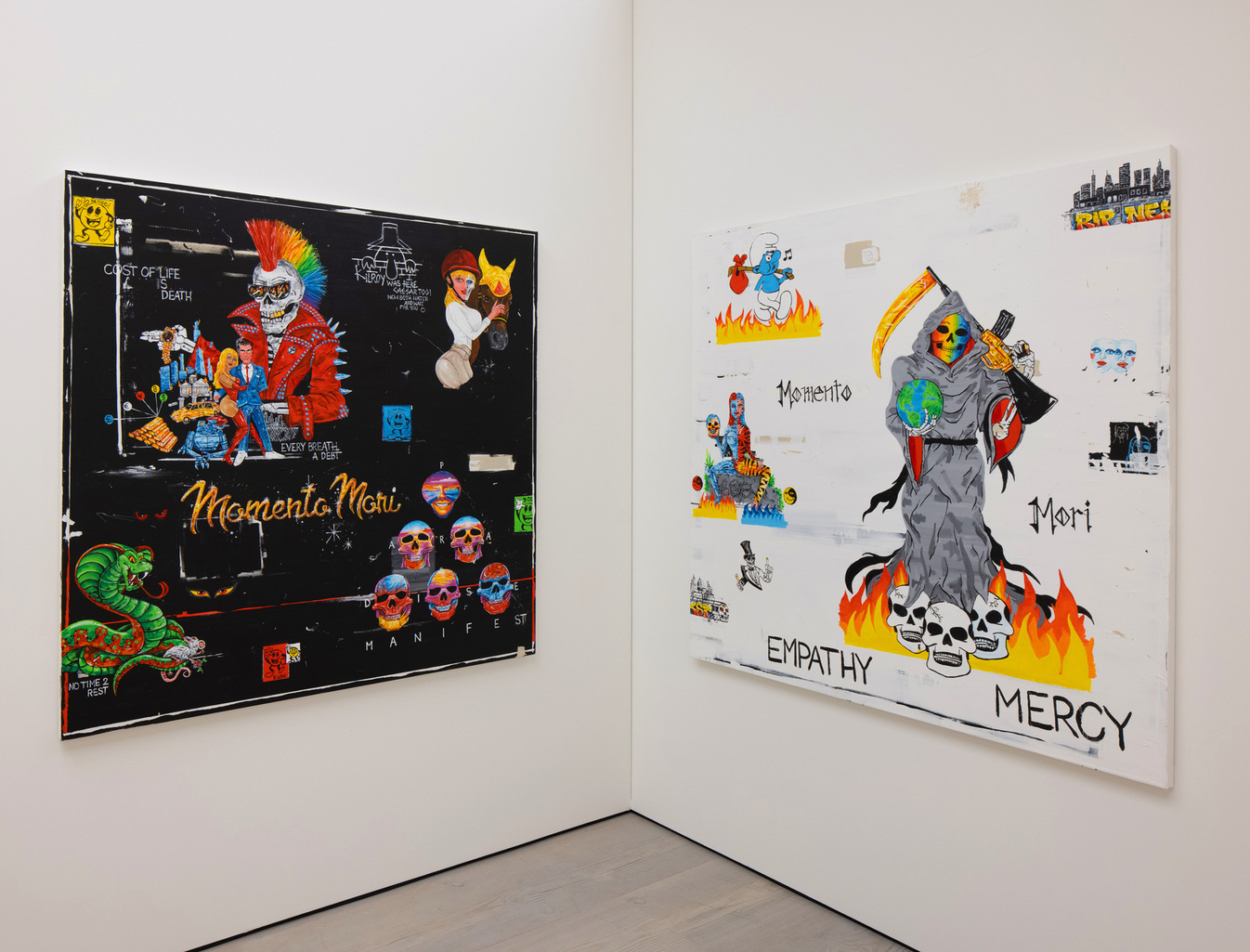
AZ:你希望這次展覽對當今的藝術界產生什麼樣的影響呢?
EP:我認為這是一個很好的時機來預告我們將於今年舉辦《街頭之外——上海》。這就是我們希望人們從展覽中了解,街頭藝術還有更多未來。越來越多的人成為藝術家,藝術家也越來越出名。比如謝帕德.費爾雷(Shepard Fairey)、村上隆和KAWS,他們成為了更響亮的名字。我們只是想向人們強調,整個運動仍在不斷發生和發展。你可能在街上見過很多這樣的街頭藝術家,他們現在也在工作室創作。這是非常規的藝術實踐,這也是它真正特別之處。我希望可以帶來的影響是,讓當代藝術界可以繼續發展各種不尋常的藝術創作方式。
AZ:阿迪達斯是怎麼參與到這次展覽的呢?
EP:這是一種自然的聯繫,因為阿迪達斯是80年代眾多嘻哈和塗鴉藝術家的製服。如果你到頂層的展廳,你會看到許多名人穿過的阿迪達斯服裝。這是他們的製服,因此人們開始通過穿著阿迪達斯來表明自己的身份——“如果你穿上阿迪達斯的運動夾克,你就是這個文化的一部分”。我認為這是一件很酷的事情,證明阿迪達斯從一開始就和這個文化同在,一直都是很自然的存在。這是每個人都穿過、以及現在仍然在穿的衣服。
AZ:在策劃展覽的過程中有遇到什麼困難嗎?
EP:我認為困難在於確保藝術家感覺到他們的聲音能夠被聽到,他們想要展示作品的願望能被實現,但也要保障把他們放在合適的語境中,讓他們成為矩陣的一部分,這才是讓他們感覺最舒適的地方。策劃國際展覽唯一的困難是把所有的作品放在同一個地方。但《街頭之外》這個展覽真的很幸運,因為我們所有的策展人都已經這樣研究了街頭藝術20年,我們的關係都很好。我認為確保展覽包括盡可能多的人也是一個挑戰。我們試圖講述盡可能多的故事,同時都在同一個關於塗鴉的故事背景中,這是困難的。
AZ:展覽中有什麼作品你個人特別喜歡的嗎?
EP:我真的很想展示這件西班牙藝術家ESCIF的作品 《家養野生(Domestic Wild)》。我認為這件特別的作品呼應了整個展覽的主題。這是一隻野生動物,看著它身上的圖案作為作品掛在白牆上。這就好比街頭的自由藝術表達來到了畫廊,而畫廊又回頭看這種野生的藝術形式,這種持續不斷的對話一直在發生。這是畫廊與街頭兩者之間的對話,這就是整個展覽的主題。 這就是為什麼塗鴉還沒有結束。這就是為什麼我們有50年的街頭歷史並一直在前進和發展。所以我認為這件作品完美地呈現了這次展覽的主題。
Interview 採訪 by Xinde Ren 任心得
Edited 編輯 by Michelle Yu 余小悅

